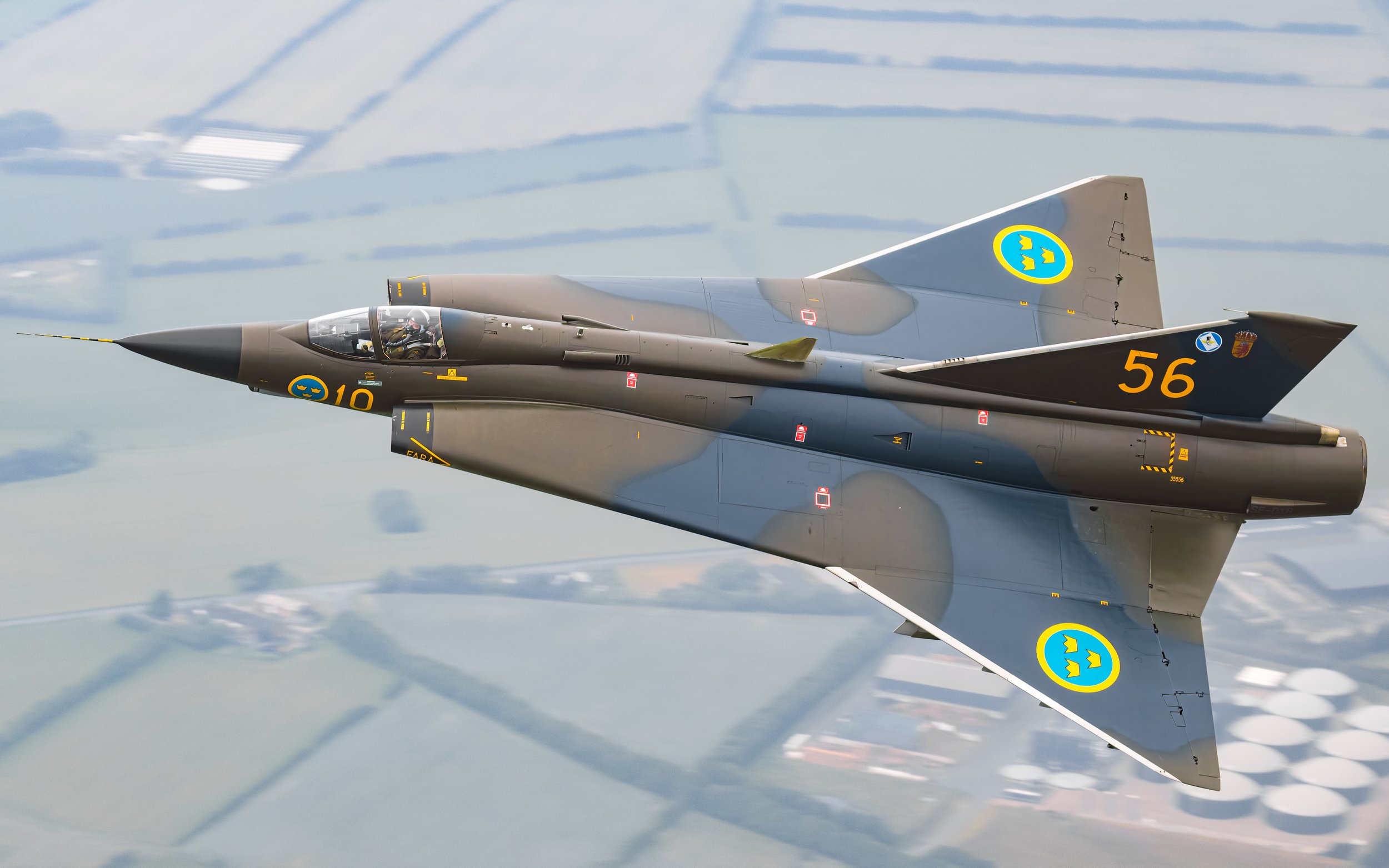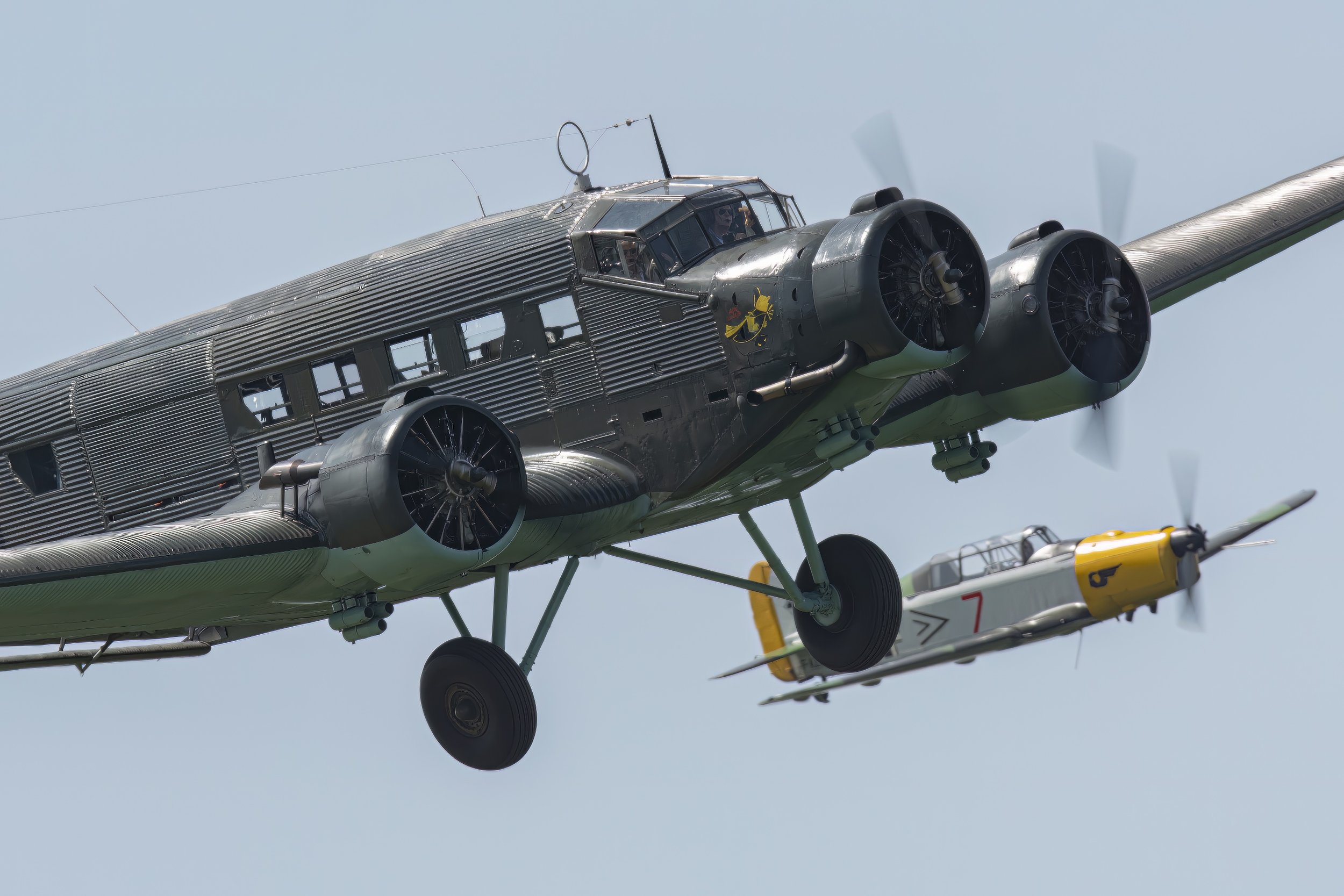Me 262 D-IMTT
Year built
2005
Aircraft
Me 262
Base
Ingolstadt Manching Airport
The construction of five replicas of this type began in the USA in 1993, taking guidance from fragments of drawings and an original two-seater training aircraft, which was used as a model.
All the parts needed to be made from scratch and no original components were installed. Equipped with modern engines and modern subsystems made in America, the first replica from the new series made its maiden flight on 20 December 2002 in Seattle, Washington.
The Messerschmitt Foundation’s replica made its first flight on 15 August 2005 in Seattle, Washington, and after a brief period of breaking in, was then dismantled again, packed up and transported by air to its new home in Manching, Germany. After reassembly and ground tests, it flew there for the first time on 25 April 2006, piloted by Horst Philipp.
| Back to Top |
Messerschmitt Me 262
The Messerschmitt Me 262, nicknamed Schwalbe (German: "Swallow") in fighter versions, or Sturmvogel (German: "Storm Bird") in fighter-bomber versions, is a fighter aircraft and fighter-bomber that was designed and produced by the German aircraft manufacturer Messerschmitt. It was the world's first operational jet-powered fighter aircraft.
The design of what would become the Me 262 started in April 1939, before World War II. It made its maiden flight on 18 April 1941 with a piston engine, and its first jet-powered flight on 18 July 1942. Progress was delayed by problems with engines, metallurgy, and interference from Luftwaffe chief Hermann Göring and Adolf Hitler. The German leader demanded that the Me 262, conceived as a defensive interceptor, be redesigned as a ground-attack/bomber aircraft. The aircraft became operational with the Luftwaffe in mid-1944. The Me 262 was faster and more heavily armed than any Allied fighter, including the British jet-powered Gloster Meteor. The Allies countered by attacking the aircraft on the ground and during takeoff and landing.
One of the most advanced WWII combat aircraft, the Me 262 operated as a light bomber, reconnaissance, and experimental night fighter. The Me 262 proved an effective dogfighter against Allied fighters; German pilots claimed 542 Allied aircraft were shot down, although higher claims have sometimes been made. The aircraft had reliability problems because of strategic materials shortages and design compromises with its Junkers Jumo 004 axial-flow turbojet engines. Late-war Allied attacks on fuel supplies also reduced the aircraft's effectiveness. Armament production within Germany was focused on more easily manufactured aircraft. Ultimately, the Me 262 had little effect on the war because of its late introduction and the small numbers that entered service.
Although German use of the Me 262 ended with World War II, the Czechoslovak Air Force operated a small number until 1951. Also, Israel may have used between two and eight Me 262s. These were supposedly built by Avia and supplied covertly, and there has been no official confirmations of their use. The aircraft heavily influenced several prototype designs, such as the Sukhoi Su-9 (1946) and Nakajima Kikka. Many captured Me 262s were studied and flight-tested by the major powers, and influenced the designs of production aircraft such as the North American F-86 Sabre, MiG-15, and Boeing B-47 Stratojet. Several aircraft have survived on static display in museums. Some privately built flying reproductions have also been produced; these are usually powered by modern General Electric CJ610 engines.
| Back to Top |
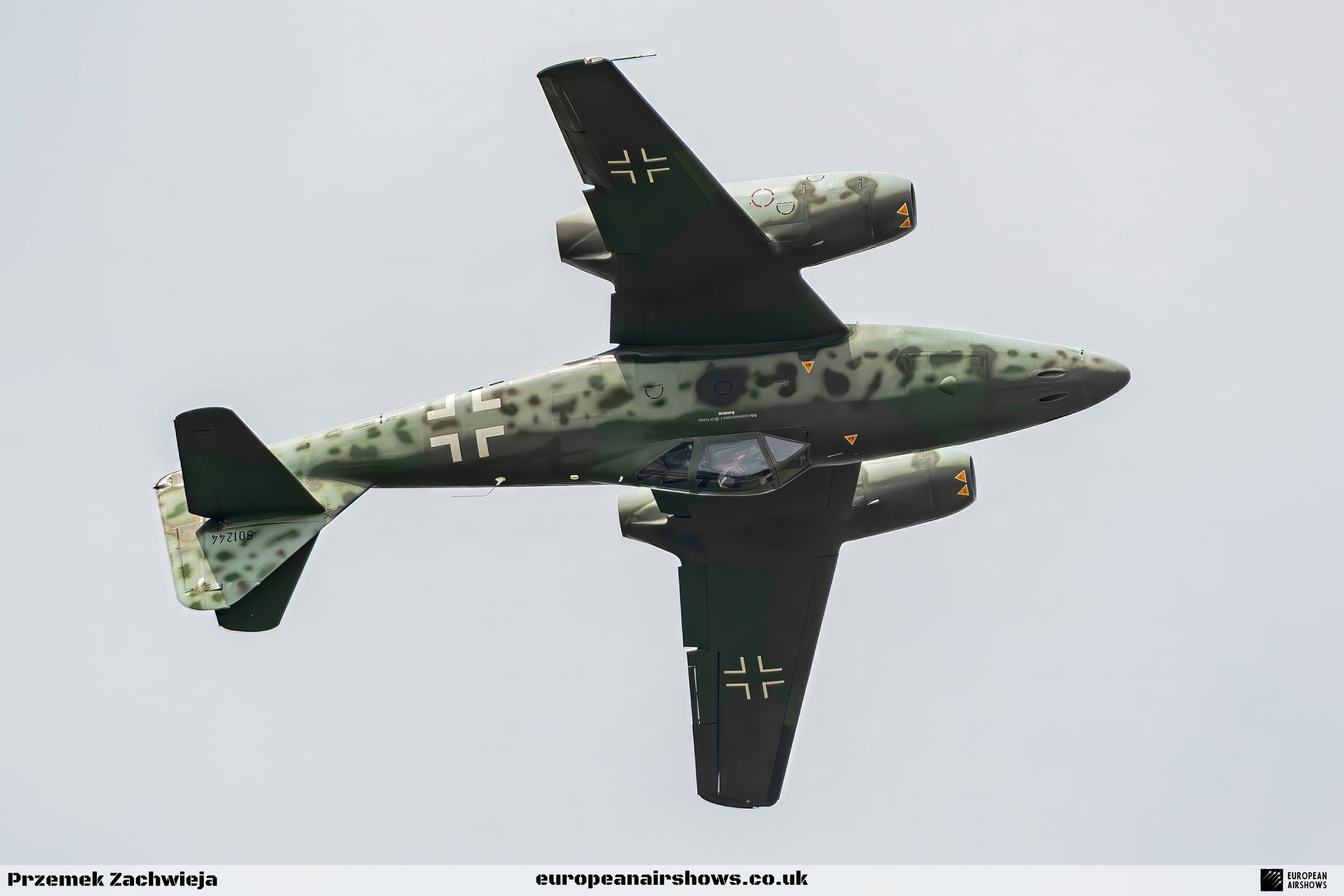
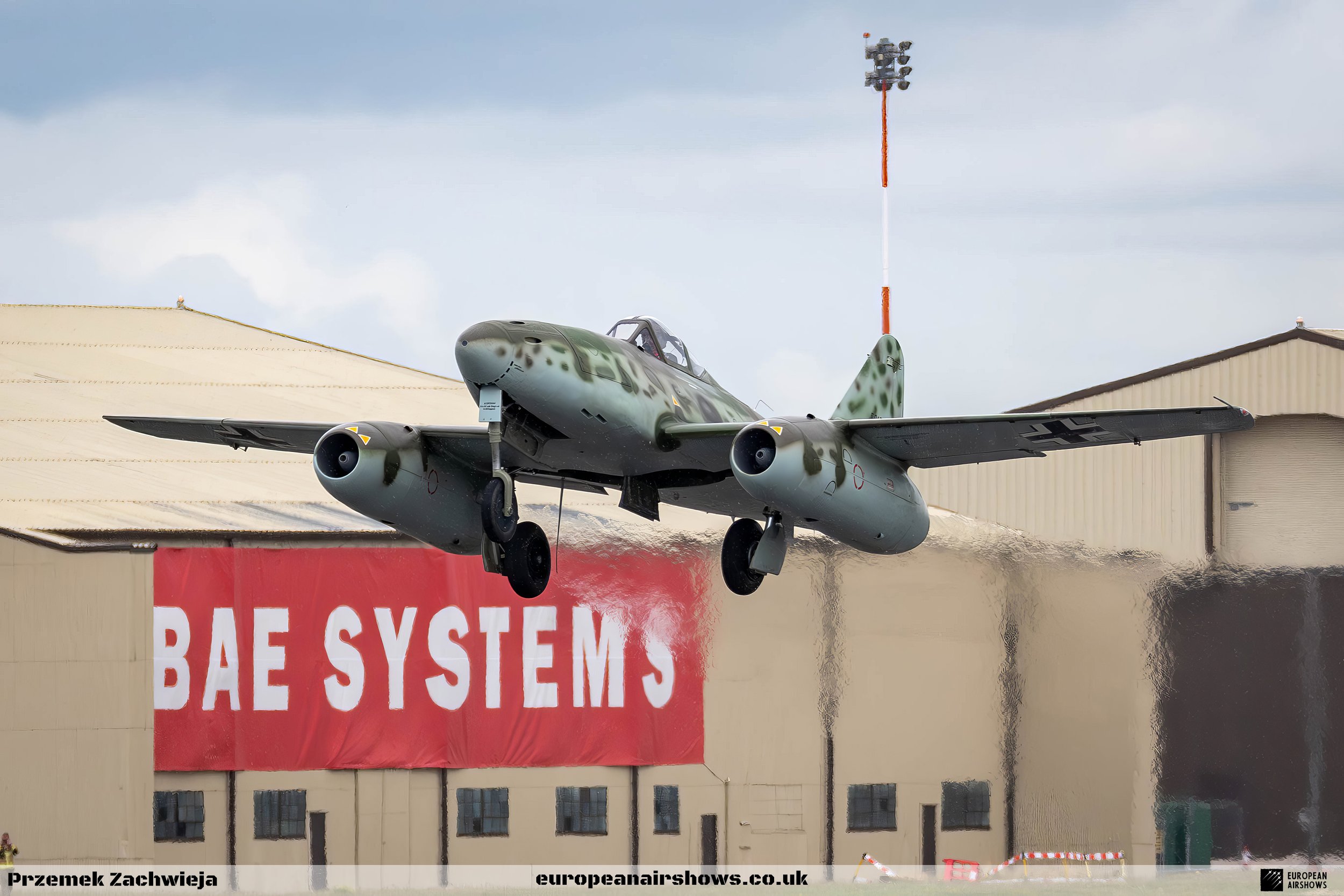
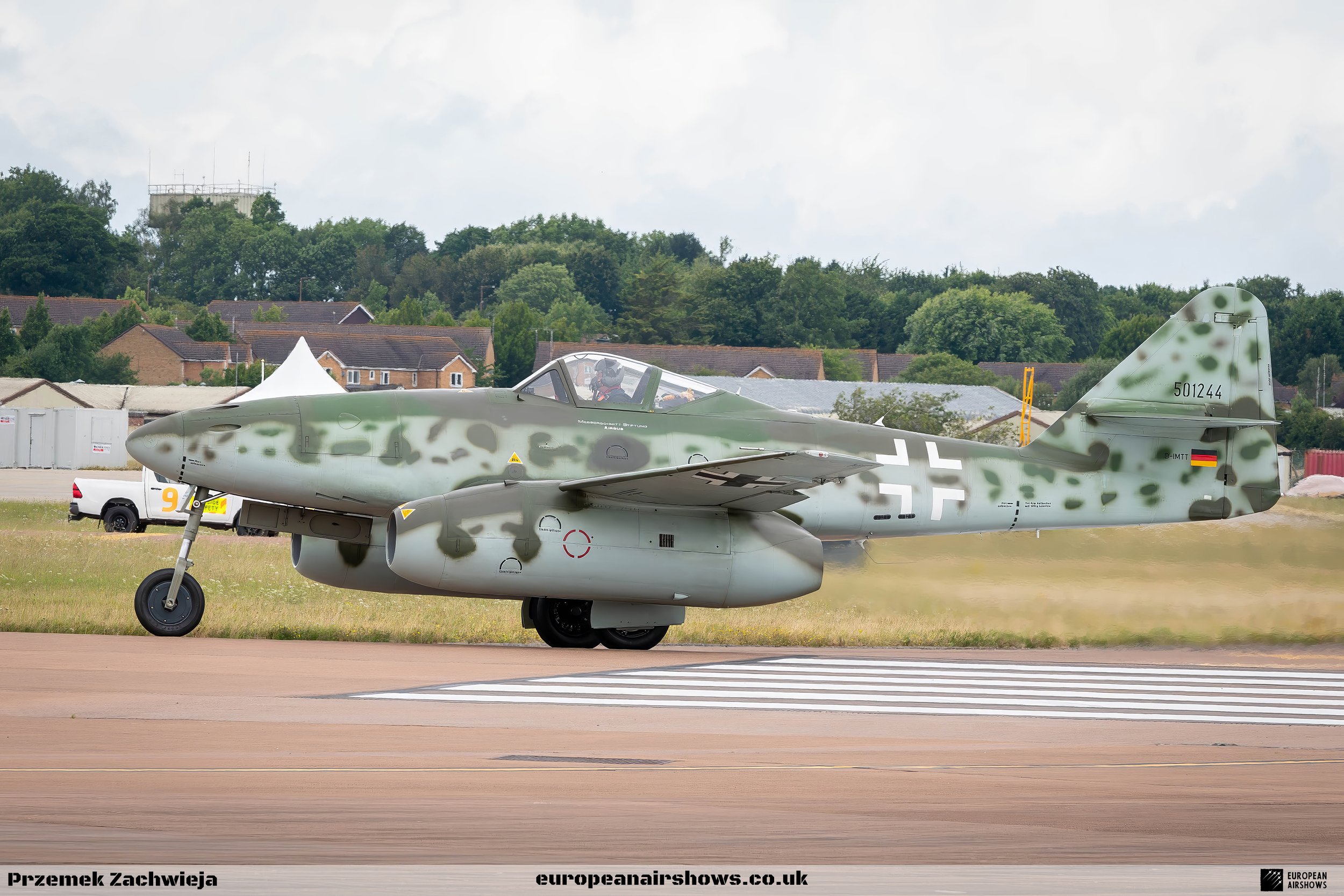
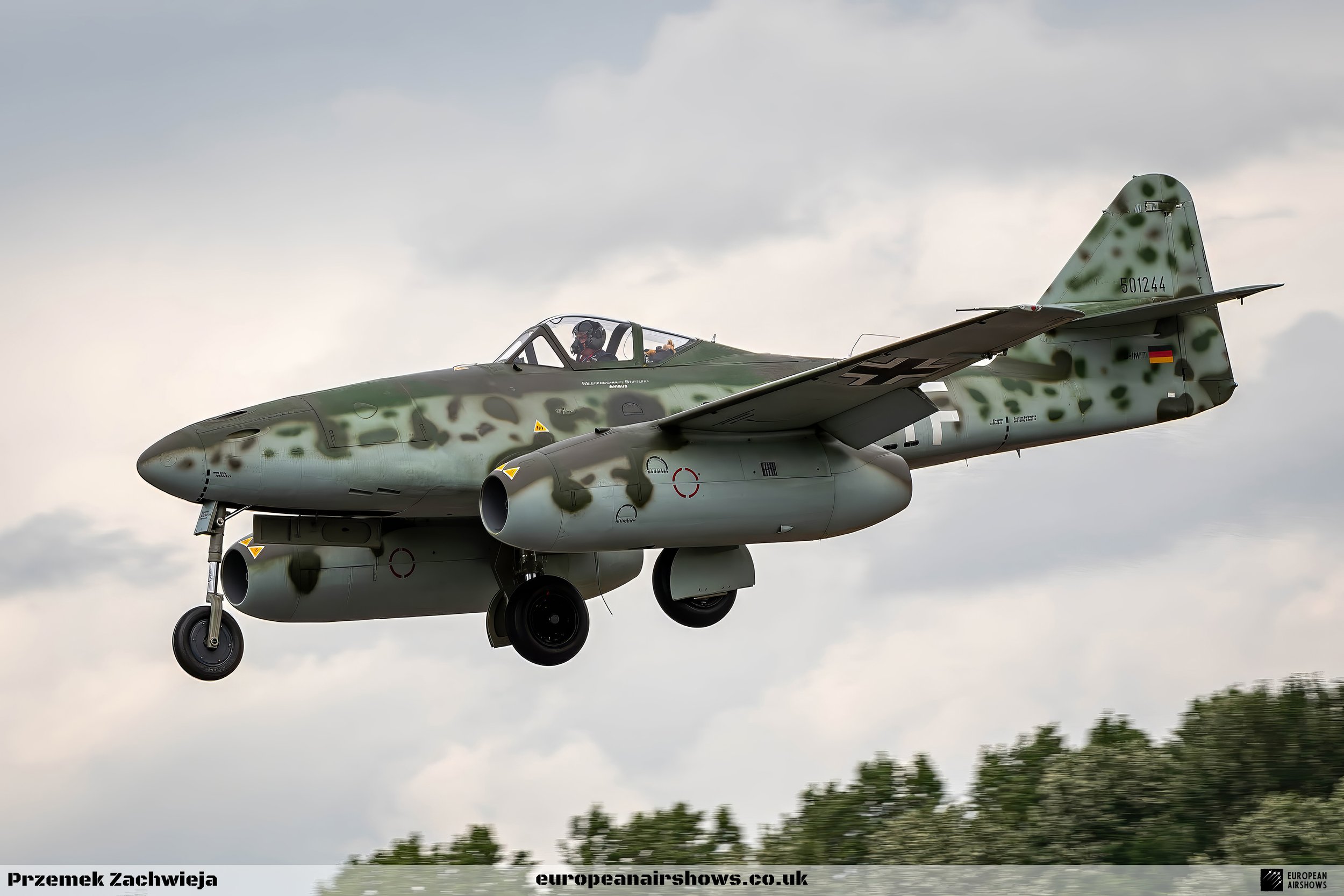
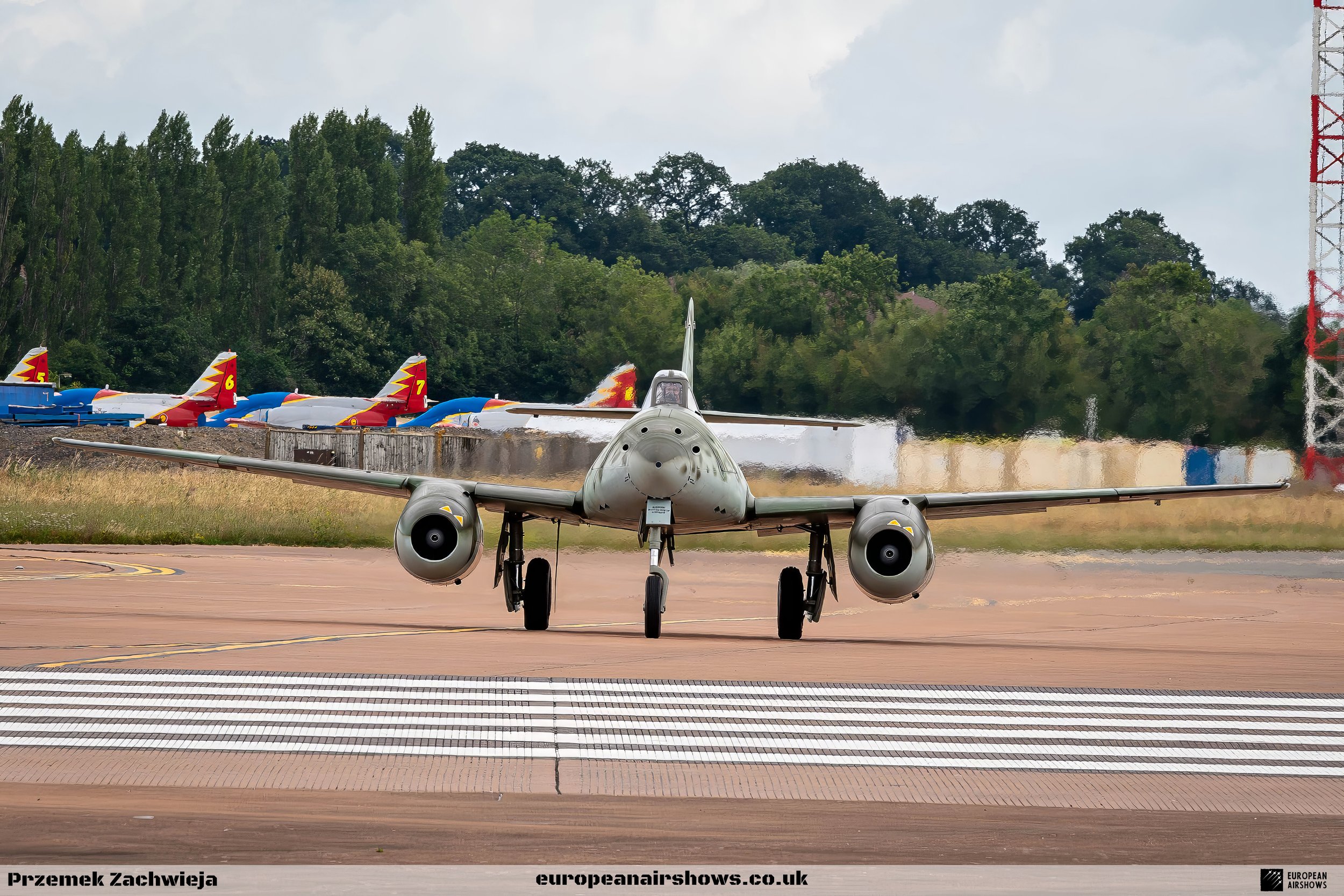
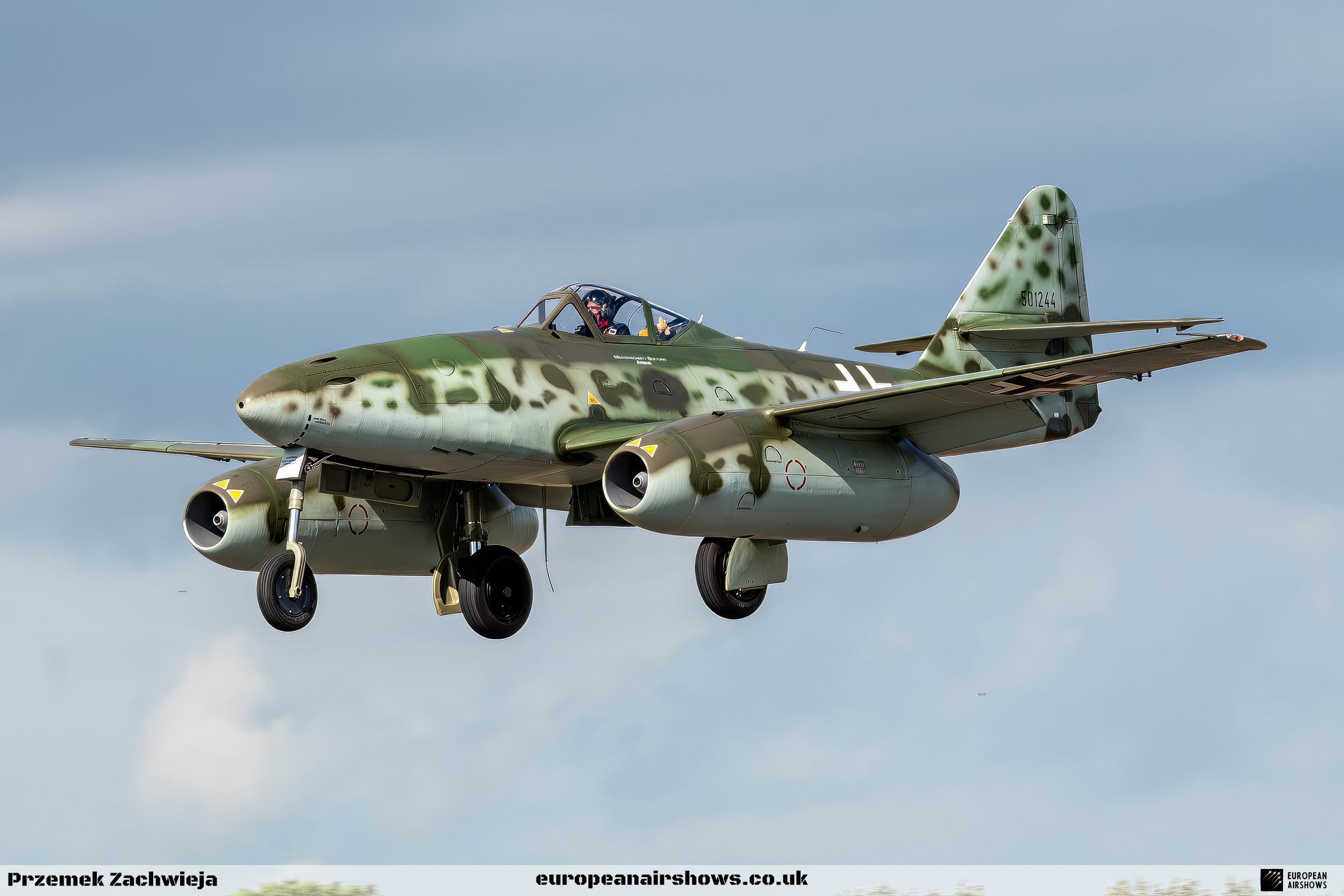
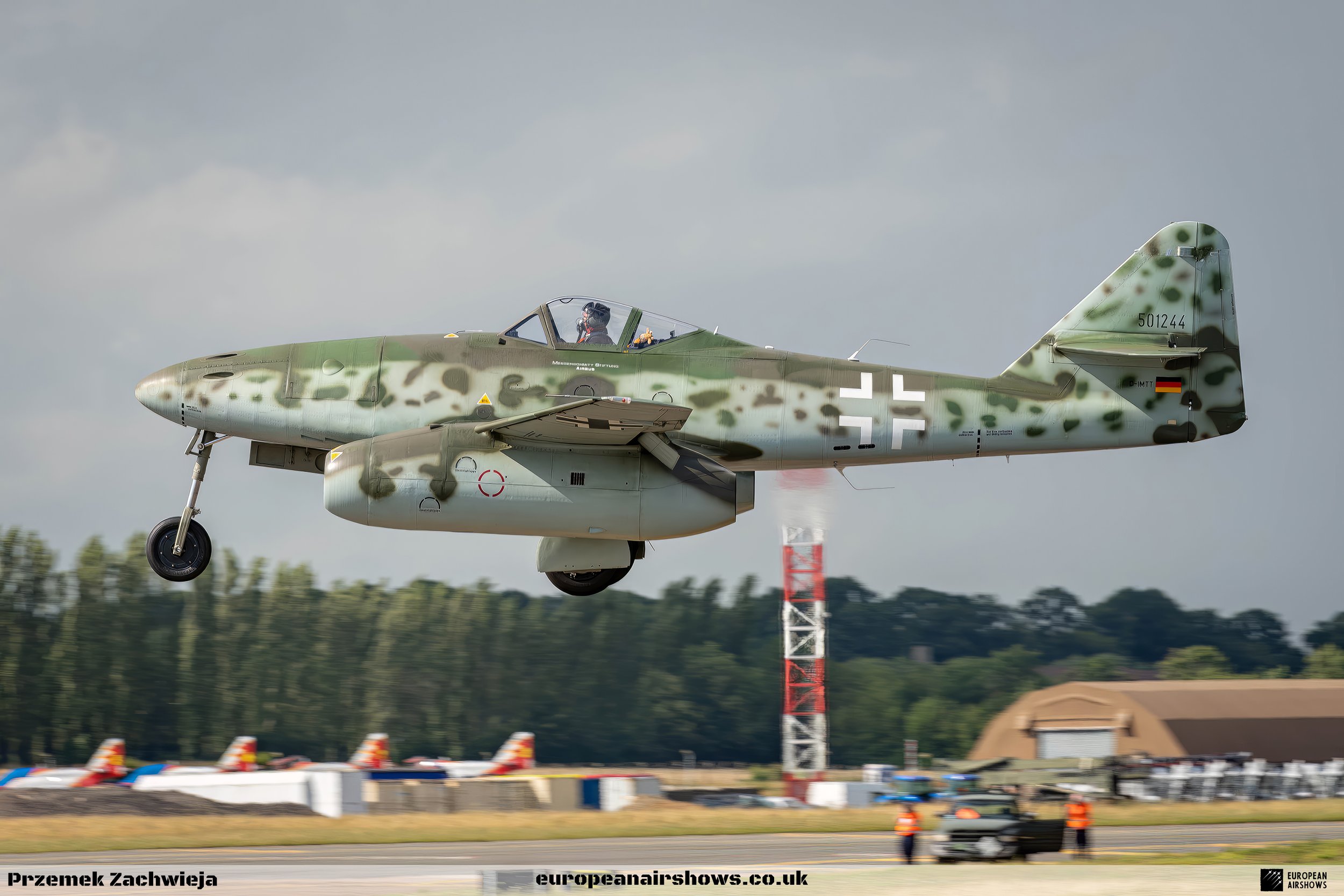
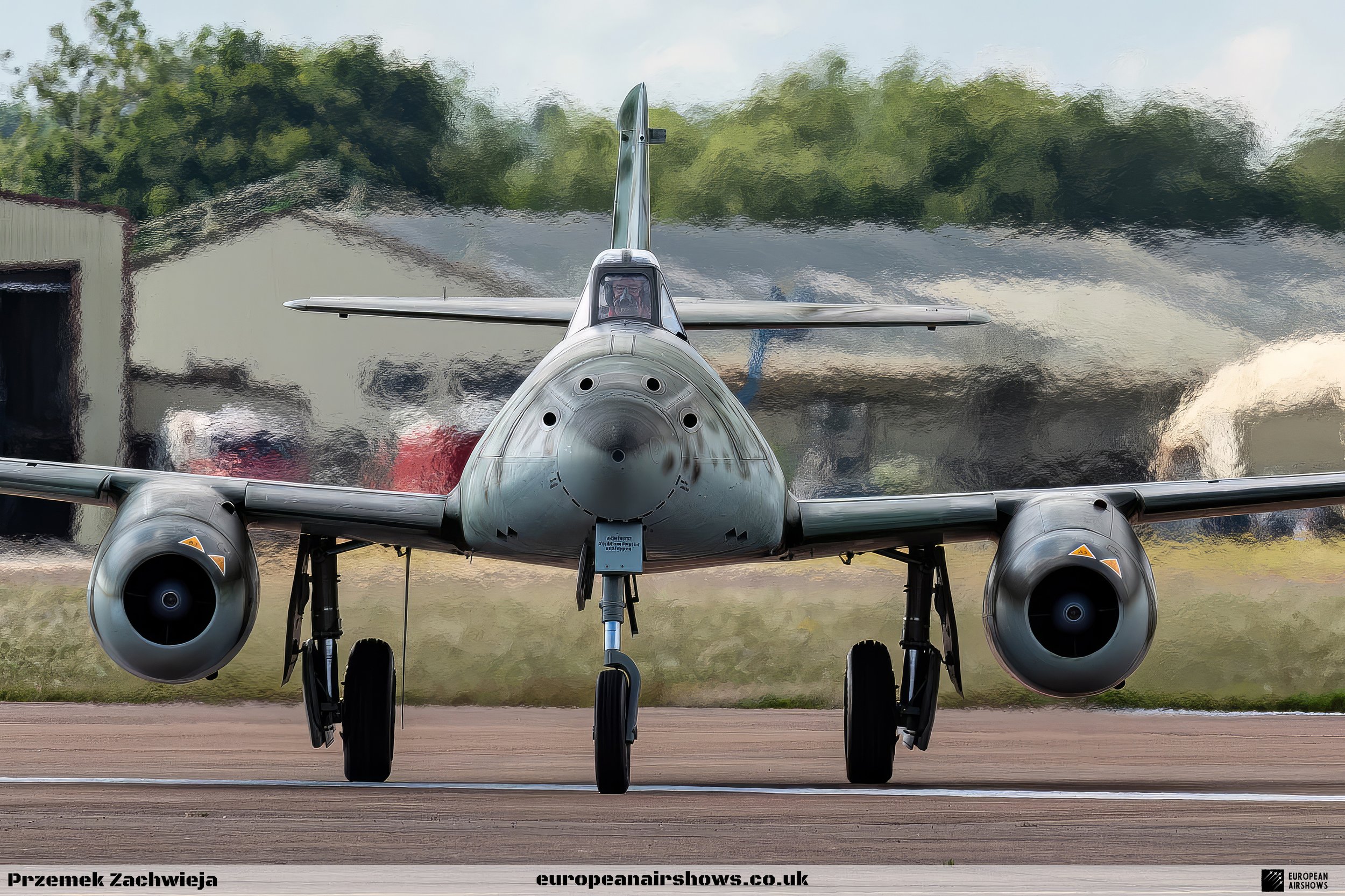
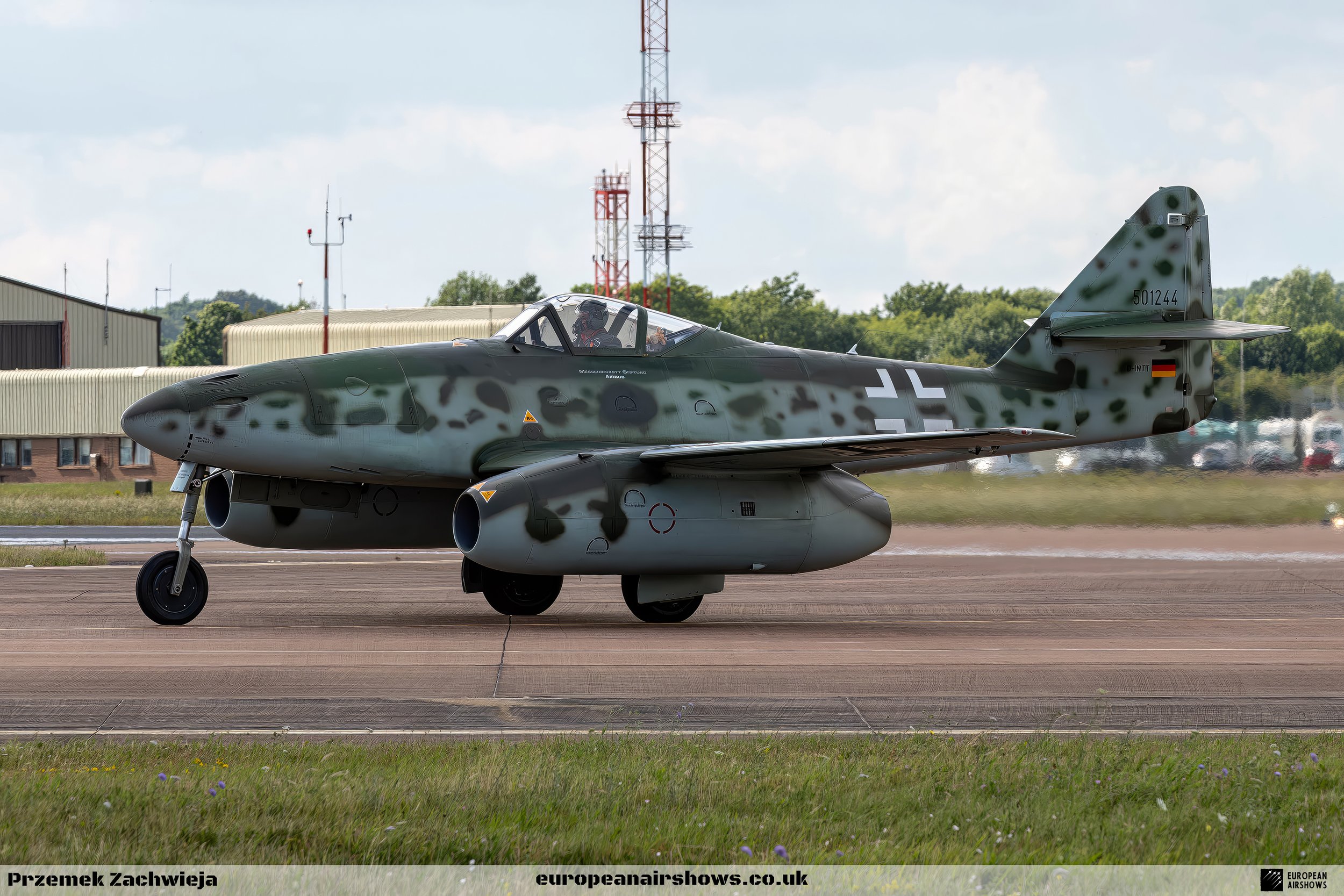
| Back to Top |

















